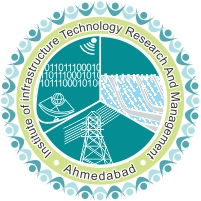Van der Waals Heterostructures for Advanced Infrared Photodetection: Innovations in Stability and Spectral Range
Authors :- A Kushwaha, M Raj, R Kumar, N Goel
Publication :- Materials Today Nano, 29 (2025): 100582 (Elsevier)
Infrared (IR) photodetectors have gained significant attention in recent years due to their crucial role in a variety of applications, including night vision, military technology, communication, remote temperature sensing, and biomedical imaging. Conventional IR photodetector materials are widely used for commercial purposes and can operate at room temperature. However, they have limitations, including susceptibility to noise, complex manufacturing processes, and limited spectral response range, which restrict their suitability for diverse applications. The emergence of two-dimensional (2D) materials offers new opportunities for developing high-performance IR photodetectors due to their strong light-matter interaction, tunable bandgap, broad spectral response, and low power dissipation. Nevertheless, weak light absorption and short carrier lifetimes limit the use of individual 2D materials in IR photodetectors. This review highlights how van der Waals (vdW) heterostructures—formed by integrating 2D materials with other materials such as zero-dimensional (0D) nanoparticles, one-dimensional (1D) nanowires (NWs), or bulk three-dimensional (3D) materials—can overcome these limitations, leading to enhanced IR photodetector performance. The vdW heterostructures allow for tunable spectral responses and flexible device configurations, which are unattainable with conventional semiconductors. This review discusses recent advancements in vdW heterostructure-based IR photodetectors, focusing on structural and architectural innovations necessary to meet the growing demand for intelligent, integrated, and multidimensional recognition systems. By examining novel combinations of 2D materials with other materials, this paper provides a pathway to improved stability, faster response times, and better ambient performance. This review also addresses challenges in integrating 2D materials with other structures and offers insights into future directions for developing high-performance IR photodetectors using vdW heterostructures, ultimately aiming to bridge gaps in current technology and push forward the boundaries of IR photodetection.

